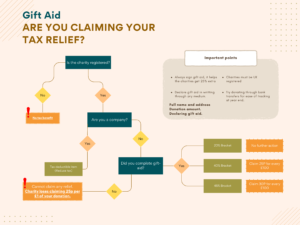When it comes to retirement planning and investment strategies in the UK, Self-Invested Personal Pensions (SIPPs) and Small Self-Administered Schemes (SSAS) are two popular options. Both offer unique benefits and features, making them suitable for different types of investors, particularly business owners and directors. Here’s a detailed overview of each, including their advantages, tax implications, and key differences.
What is a SIPP?
A SIPP is a personal pension plan that allows individuals to manage their own retirement savings. Here are some key features:
- Investment Flexibility: SIPPs offer a wide range of investment options, including stocks, bonds, mutual funds, and commercial property.
- Tax Relief: Contributions to a SIPP receive tax relief, effectively boosting the amount invested. For example, a £10,000 contribution can become £12,500 with tax relief.
- Tax-Free Growth: Any income or capital gains generated within the SIPP are tax-free, allowing for greater accumulation of wealth over time.
- Access to Funds: Members can access their pension pot from age 55, with the first 25% available as a tax-free lump sum.
What is a SSAS?
A SSAS is an occupational pension scheme typically set up by companies for their directors and key employees. Here’s what makes it distinct:
- Control and Management: SSAS members often act as trustees, giving them more control over investment decisions.
- Investment Options: Similar to SIPPs, SSAS allows for a variety of investments, including loans to the sponsoring employer and investments in commercial property.
- Tax Benefits: Contributions made by the employer are tax-deductible, and the fund grows tax-free, similar to a SIPP.
- Loans to the Company: SSAS can lend up to 50% of its value to the sponsoring employer, providing liquidity and financial flexibility.
Tax Reliefs for SIPPs and SSAS
Both SIPPs and SSAS offer significant tax reliefs, which enhance their attractiveness as retirement savings vehicles:
- Tax Relief on Contributions:
- Basic Rate Taxpayers: For every £80 contributed, the government adds £20, making it £100 in the pension pot.
- Higher Rate Taxpayers: They can claim additional relief through their self-assessment tax return, effectively increasing the contribution amount further.
- Employer Contributions: Contributions made by employers to a SSAS are fully tax-deductible, reducing the company’s taxable profits.
- Tax-Free Growth:
- Any investment growth, including rental income from properties held within the SIPP or SSAS, is tax-free. This allows the pension fund to accumulate wealth more efficiently compared to other investment vehicles.
- Exemption from Capital Gains Tax:
- When the SIPP or SSAS sells an asset, such as commercial property, it is exempt from capital gains tax. This is a significant advantage, as it allows for greater profit retention within the pension fund.
- Tax-Free Lump Sums:
- Upon reaching retirement age (currently 55), members can take up to 25% of their pension pot as a tax-free lump sum. This can provide a substantial financial benefit at retirement.
Key Differences Between SIPPs and SSAS
| Feature | SIPP | SSAS |
| Type | Personal pension plan | Occupational pension scheme |
| Eligibility | Open to any UK resident under 75 | Typically set up by company directors |
| Control | Managed by a provider; individual control | Members are usually trustees |
| Investment Flexibility | Wide range of assets | Greater flexibility, including loans to the sponsoring employer |
| Loans | Cannot lend to the member’s company | Can lend up to 50% of the fund value to the sponsoring employer |
| Investment in Own Company | Limited; generally not allowed | Can invest up to 5% of the fund in the sponsoring company |
| Annual Contribution Limit | Up to £60,000 per tax year | Up to £60,000 per member per tax year |
Conclusion
Choosing between a SIPP and a SSAS depends on individual circumstances, investment goals, and the level of control desired. SIPPs are ideal for individuals seeking flexibility and personal management of their retirement funds, while SSAS is suited for business owners looking to integrate their pension planning with their business operations. Both options provide valuable tax benefits and opportunities for growth, making them effective tools for retirement planning.









